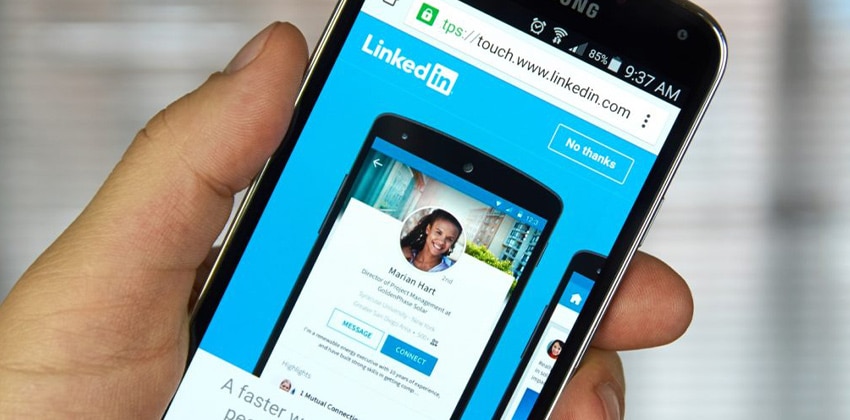
There are numerous job hunting tactics you can employ on LinkedIn.
3 Major Ways to Leverage LinkedIn for Job Search
In one way or another, all of these LinkedIn job hunting tactics serve three larger purposes. I’ve written in previous articles about the first two of them:
- Be findable – using LinkedIn to “put yourself out there” in order to be found by recruiters and others who you want to find you.
- Find job postings – using LinkedIn to find specific job opportunities.
Of course, you need to do both of these things for a successful outcome to your quest.
However, it is important to step back and understand that you need to sift through a great deal of information in order to do those things well. And LinkedIn is nothing if not among the largest sources of information and insight available!
Building Business Intelligence with LinkedIn
LinkedIn’s third function, building your own ever-increasing business intelligence, is crucial. Unfortunately, it is far too often overlooked!
When you build a large network of LinkedIn connections, you’ll gain access to information that can give you a “leg up” at every stage of the job-hunting process.
While space prevents this article from an exhaustive exploration of this topic, here are three types of business intelligence that can propel your job search, and four tips about how to use LinkedIn to find beneficial information:
1.Get the Inside Scoop On Your Target Companies.
Of course you want “the job”! But remember: after you get it, you have to live with it. The negative consequences of accepting a poorly fitting job can be serious and long lasting. You should go to sites like Glassdoor to get anonymous feedback from current and former employees. But that only gets you so far.
It is so much better to actually get into a dialog with former employees of your target company. Learn from them about the corporate culture, challenges and opportunities of working in that environment, and get their tips about how to proceed.
Advertisement
TIP: Click on “Advanced” just to the right of the search box at the top of the Home page and begin a People search. Fill in the company name in that field, and as you do another search field will open asking you “Current or Past.” Select “Past,” and you’ll see the people in your network that used to work at the company. If the list is large, add other parameters to narrow it down, one by one, until you get to a manageable size.
Reach out to people on your list, and ask if they would be willing to talk with you about their experience at ABC Company. Make sure you offer to do so at their convenience, and only for a limited period of time. You’ll be surprised by how many people will be willing to freely give you information that you’ll never see elsewhere.
Caveat: some people will have sour grapes due to their own frustrations at the company or the manner in which they separated. You will need to evaluate carefully if the negatives you hear are theirs alone, or if they are shared by others and, therefore, represent something of greater concern.
2.Network Yourself into the Company.
Somewhere around 80% of all jobs are filled by somebody knowing somebody: networking. But how do you learn with whom to network and how to get to these people?
TIP: Look up your target Company on LinkedIn. See who among your network works there, or can put you in touch with someone who works there.
Reach out to those whose background is closest to yours, and network your way in by having a current employee submit your resume. It is a win-win-win: you will get your resume at the top of the pile, the company’s employee can get a referral bonus, and the company has the opportunity to met you!
3. Gain an Edge in a Job Interview.
You’ve made it past the initial screenings, and are ready to actually speak with the hiring authority. When you do your homework in advance, you can transform a “grilling” into a “conversation”. To do so you must evidence self-confidence and the ability to show that you know about the company, its challenges and how you can add value.
TIP 1: Make certain to find out with whom you will be speaking in advance, and examine their profile carefully before your conversation. Look in particular for areas of commonality that you might share, such as colleges you have both attended or places you have both worked.
You shouldn’t be obvious about it, but when the moment is right you can reference that commonality in the course of your discussion.
TIP 2: When looking at the interviewer’s profile, scroll down to find out to what LinkedIn groups she or he belongs. Join groups that relate to your skillset and industry, and carefully look through their discussions.
Here you can learn the “hot-button” issues and what people are saying about them. Be prepared to talk about these topics, and ask the hiring manager’s perspectives as well.
The more you explore LinkedIn, the more you’ll be able to piece together its different elements in a strategic fashion to advance your campaign for a new job. There is no limit to what you can learn from this tremendous resource!
The other articles in this LinkedIn Job Search Learnings series:
Happy hunting!
About the author…
Job-Hunt’s Social Media and Job Search Expert Arnie Fertig, MPA, works with clients throughout the U.S. who are dedicated to their own career advancement on the nuts and bolts of job hunting. He is the Head Coach at Jobhuntercoach.com, and contributes weekly to the USNews & World Report “On Careers” Blog. Connect with him on LinkedIn, on Twitter (@jobhuntercoach), or directly: Fertig [at] jobhuntercoach.com.
Don't forget to share this article with friends!




